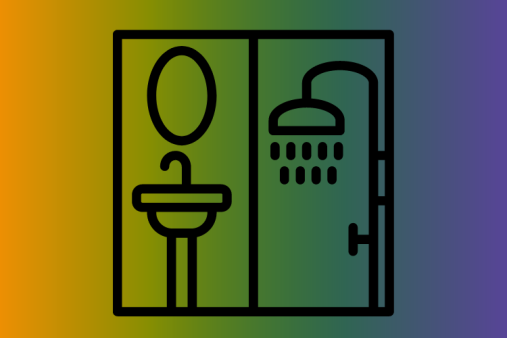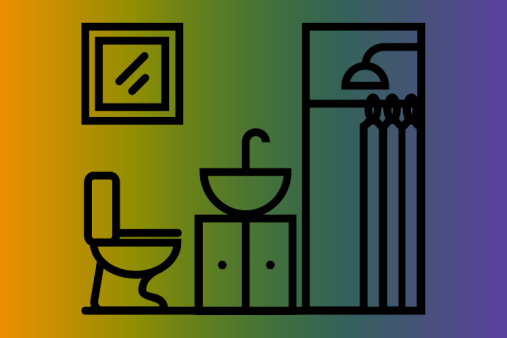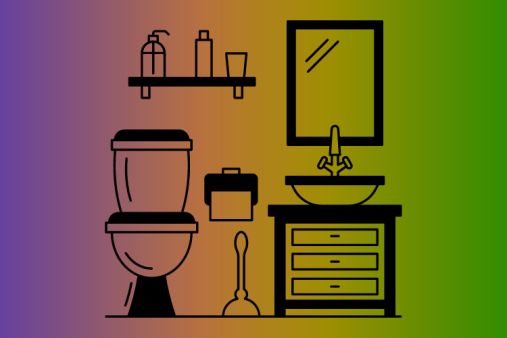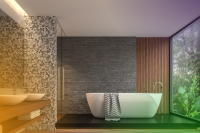Bringing in the Light: A UK Homeowner’s Guide to Brightening Up Dark Bathrooms
The reality of many UK homes, especially older terraced and Victorian properties, is that bathrooms are often interior rooms, north-facing, or tucked into small spaces with minimal natural light. A dark bathroom can feel cramped, gloomy, and unwelcoming—the antithesis of the modern, spa-like sanctuary homeowners desire.
If you’re a UK homeowner considering a bathroom renovation, conquering the gloom is often the primary goal. This comprehensive guide explores every available option, from structural changes to clever surface and lighting tricks, to ensure your new bathroom is bathed in light and appears spacious and revitalising.
1. Structural Solutions: Maximising Natural Light
The most effective, though often the most invasive, solution is to increase the ingress of natural light. If you are planning a full renovation, these structural changes are worth considering.
The Magic of the Skylight (Rooflight)
For bathrooms on the top floor of a house or in a bungalow, a skylight is an unparalleled solution.
- Impact: A skylight or Velux window brings in three times the amount of light as a vertical window of the same size because it is directly exposed to the sky. It delivers intense, uniform daylight, making the room feel instantly taller and brighter.
- Ventilation: Skylights offer excellent natural ventilation, tackling the damp and condensation issues common in dark bathrooms (a key requirement under UK Building Regulations Part F).
- Considerations: Installation requires roof work and structural checks, making it a job for a qualified builder and roofer. It is a significant investment but offers the highest return on brightness.
Sun Tunnels (Light Tubes)
When a full skylight is impossible (e.g., if the bathroom is on the first floor beneath a second floor), a sun tunnel is the next best thing.
- Mechanism: A light tube uses highly reflective silver material inside a rigid or flexible duct to capture sunlight from a dome on the roof and pipe it down to a diffuser in the bathroom ceiling.
- Advantages: They work even on cloudy days, require much less invasive structural work than a full skylight, and are ideal for internal bathrooms that have attic space above them.
- UK Applicability: They are a brilliant solution for adding natural light without sacrificing privacy or major structural integrity.
Internal Borrowed Light
In cases where the bathroom shares a wall with a brightly lit corridor or bedroom, you can strategically borrow light.
- Internal Windows: Installing a narrow, high-level internal window (using obscure or frosted glass for privacy) allows daylight to spill into the dark room.
- Glass Blocks: Replacing a section of a dividing wall with glass blocks maintains privacy while allowing light diffusion. This is a popular, stylish solution for internal en-suites.
2. Surface Strategy: Reflecting and Diffusing Light
Once you have maximised natural light entry, the focus shifts to ensuring every surface in the room reflects and magnifies that light.
The Power of White and Light Colours
This is the fundamental principle of brightening any dark space.
- Colour Choice: Use brilliant whites, pale creams, very light greys (like an oyster or bone colour), or pale pastels (e.g., mint green or sky blue). These colours have the highest Light Reflectance Value (LRV), bouncing back up to 90% of the light that hits them.
- Monochromatic Schemes: Sticking to a single, light colour palette for walls, floor, and ceiling prevents the eye from stopping, blurring the boundaries and making the room feel larger and brighter.
- High-Gloss Paint: Use specialist bathroom paint with a slight sheen or a high-gloss finish, particularly on the ceiling and trim, as gloss surfaces are more reflective than matte.
Tiles: Gloss, Size, and Grout
Your choice of wall and floor covering has a huge impact on light reflection.
- High-Gloss Tiles: A glossy or polished finish on your wall tiles will act like a mirror, catching the light and diffusing it across the room. Avoid matte or dark, heavily textured tiles which absorb light.
- Large Format Tiles: Larger tiles mean fewer grout lines. Grout lines break up the surface and visually reduce space and light flow. Opting for large-format porcelain tiles (600x600mm or bigger) creates a seamless, expansive look.
- Matching Grout: If using light tiles, choose a grout colour that is as close as possible to the tile colour (e.g., white or pale grey grout with white tiles). This minimises the grid effect and maximises light reflection.
Flooring Choices
While some designers advocate for a darker floor to "ground" the room, in a very dark bathroom, it is usually better to keep the floor light to maintain continuity.
- Light Stone or Wood Effect: Choose a pale marble-effect porcelain or a light, bleached wood-effect vinyl or tile. Ensure the surface is slightly polished or glossy.
3. Optical Illusions: Mirrors and Glass
Mirrors and transparent materials are the most cost-effective and dramatic ways to visually expand and brighten a dark bathroom, acting as secondary light sources.
The Magic of Large Mirrors
Mirrors are indispensable in a dark bathroom.
- Wall-to-Wall Reflection: The most powerful trick is to install a large, frameless mirror across an entire wall (usually above the vanity). This instantly doubles the perceived size of the room and reflects all light sources—natural and artificial—deep into the space.
- Strategic Placement: Position mirrors opposite the main light source (whether a window, skylight, or the central ceiling light) to bounce the light effectively.
- Recessed Mirrored Cabinets: These provide crucial, hidden storage, removing visual clutter, while maintaining the reflective surface. Modern versions include integrated LED lighting (see Section 4).
Frameless Glass
Minimize visual barriers wherever possible.
- Frameless Shower Screens: Ditch the heavy frames, curtains, or frosted glass. A clear, frameless glass shower screen makes the shower area disappear and allows light to flow unimpeded to the back wall. This makes the entire room feel unified and much larger.
- Wall-Hung Fixtures: While not glass, wall-hung toilets and vanities achieve a similar effect by exposing more of the floor. This visual continuity of the floor surface makes the room feel more expansive.
4. The Art of Artificial Illumination (Layered Lighting)
In a dark, internal UK bathroom, artificial lighting isn't just a necessity—it is the primary design element. You need layered lighting to mimic natural daylight.
Layer 1: Ambient/General Lighting
This provides overall illumination, replacing the sun itself.
- Recessed LED Spotlights: Use multiple, evenly distributed LED spotlights on the ceiling. Avoid a single, dim central pendant, which casts harsh shadows and leaves corners dark. Use high-lumen (bright) bulbs with a Cool White (4000K) or Daylight (5000K+) colour temperature to mimic bright, natural daylight.
- Ceiling Washers: Install linear LED strips or spotlights aimed at a light-coloured ceiling to diffuse soft light downwards, reducing glare.
Layer 2: Task Lighting
This is focused light essential for grooming, shaving, and makeup application.
- Integrated Mirror Lights: This is the ideal solution. Choose mirrored cabinets or large mirrors with integrated LED strips or light panels, typically positioned at face level. Crucially, ensure the light projects towards the person, not just downwards, to eliminate shadows under the chin or eyes.
- Vertical Sconces: If a lighted mirror isn't possible, install thin vertical light bars or sconces on either side of the mirror at roughly eye level.
Layer 3: Accent/Mood Lighting
This adds depth and visual interest, preventing the room from feeling flat.
- Plinth Lighting: Install LED strips under a floating vanity or along the floor plinth. This visually "lifts" the fixtures and creates a pleasant glow, especially at night.
- Shower Niche Lighting: Recessing a waterproof LED strip inside a shower niche highlights the display area and adds depth to the wet zone.
- Backlit Features: Backlighting a freestanding bath panel or a feature wall adds drama and soft peripheral light.
Dimmer Switches
Always install dimmer switches on your main ambient lighting. This allows you to set the light to bright, energizing daylight levels in the morning, and switch to a softer, warmer light (around 2700K) for a relaxing evening soak.
5. Fixtures and Finishes: The Finishing Touches
The final elements—taps, towel rails, and accessories—should contribute to the bright, minimal aesthetic.
Chroming and Polished Finishes
Choose reflective surfaces for taps, shower heads, and accessories.
- Polished Chrome or Stainless Steel: These finishes reflect light well and blend seamlessly into a bright scheme. While matte black accessories are trendy, they absorb light and should generally be avoided in tiny, dark spaces.
- Shiny Heated Towel Rails: Choose a polished chrome or mirror-finish towel rail over a matte or coloured radiator to maximize light bounce.
Minimizing Visual Clutter
Clutter absorbs light and makes a small, dark room feel instantly messy and smaller.
- Hidden Storage: Utilize recessed mirrored cabinets and drawer storage within the vanity to hide all toiletries, brushes, and cleaning supplies.
- Tidy Accessories: If accessories must be visible, choose clear glass or acrylic soap dispensers and storage jars.
- Floating Shelves: If adding shelves, ensure they are narrow and contain minimal, curated items to keep the walls feeling open.
Summary: The Brightness Toolkit for UK Homeowners
Conquering a dark bathroom requires a multi-faceted approach. For UK homeowners planning a renovation, prioritizing these elements will ensure a bright, welcoming space:
|
|
|
|
|
|
|
|
|
|
|
|
|
|
|
|
|
|
|
|
|
|
|
|
By meticulously applying these strategies, your bathroom renovation will successfully banish the gloom, transforming your dark space into a bright, contemporary, and valuable part of your UK home.





